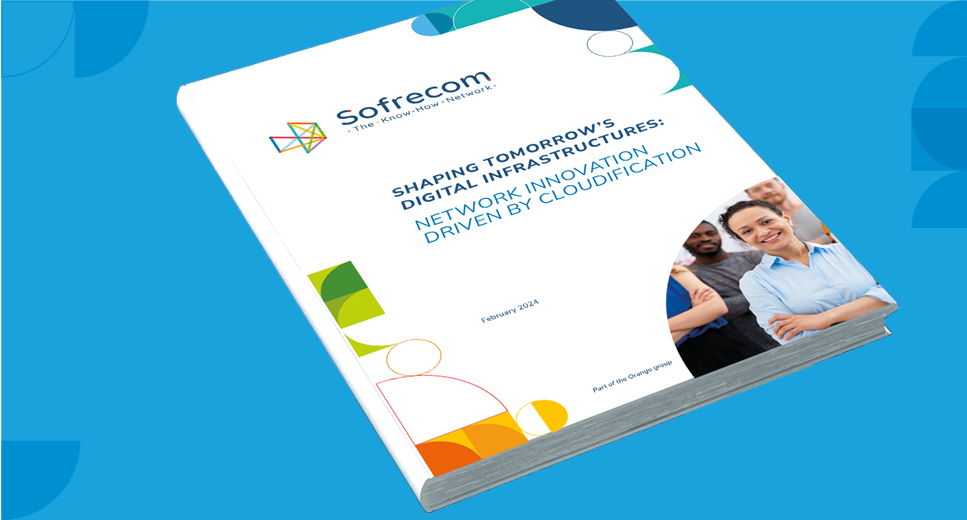
The cloudification of networks and the adoption of Application Programming Interfaces (APIs) are emerging as key catalysts for value creation and competitiveness.

In light of the substantial investments operators are making in fiber and 5G networks, operators find themselves in need of new avenues for value creation and customer loyalty through the monetization of next-generation services. Network virtualization provides operators with the chance to develop APIs at a large platform scale, thus signaling a paradigm shift that operators must proactively anticipate.
A strategic adaptation catalyst
The cloudification of networks enables the standardization, certification, and harmonization of the API market, which is still underdeveloped. For an operator, an API serves as the most efficient way to provide other market players with functions, especially those related to networks, that were previously limited to internal use or exclusive to very large clients.
Operators enhance their collaboration with specific external partners, like developers, service providers, and other operators, by making their systems accessible and sharing crucial resources. This collaborative and agile strategy enables them to quickly adjust to market shifts, fostering the development of a more dynamic ecosystem. Within this environment, innovation thrives through shared resources and emerging synergies. As a result, operators not only generate value but also enhance their competitiveness.
The API serves as a strategic platform for co-creation and innovation, enabling operators to stay at the forefront of the industry and proactively address the changing demands of an increasingly evolving market.
A paradigm shift for operators
The use of APIs is both straightforward and efficient, providing genuine scalability potential to expedite processes, increase influence, and quickly create and monetize new services with the aim of achieving a rapid return on investment (ROI). Leading operators have acknowledged the strategic importance of this shift. They strategically implement APIs at the core of their networks with the aim of crafting an agile and interconnected infrastructure. This approach allows them to proactively address the entirety of a local territory and extend their global reach through the density of the network.
All operators have a vested interest in APIs, primarily because they possess a significant competitive advantage within their ecosystem. They are already skilled at securely and compliantly (with GDPR) managing firsthand strategic information such as clients’ digital identities, online transactions, SIM card localizations, and more.
However, before committing, operators must be aware that this paradigm shift will push them to reinvent their services and transform their operational models. Hence:
• The integration of APIs into the operators’ ecosystem paves the way for platformization. Through this approach, operators evolve into service facilitators rather than mere connectivity providers. They offer partners and clients, regardless of their size or industry, access to a range of ready-to-use telecom tools and features, facilitating the development of innovative use cases in various domains such as Internet of Things (IoT), unified communications, virtual reality, and other emerging fields.
This Telco-as-a-Platform concept enables developers to rapidly and efficiently create customized applications. For businesses leveraging telecommunications as a modular platform, it provides unparalleled flexibility to agilely address the specific needs of their customers.
Consequently, they can optimize operations, enhance efficiency, and deliver enriched user experiences.
This new value proposition from operators becomes a tangible opportunity for all stakeholders to unleash creativity, innovate, and collaboratively shape the future of telecom services.
• APIs also pave the way for disintermediation, prompting operators to realign their strategies.
While operators traditionally focused on their core business activities, intermediaries (such as integrators and Communication Platform as a Service providers) created lucrative service markets. Through API-enabled reinternalization of some functions, operators can strategically regain control over their service offerings, recapture value, foster stronger customer loyalty, and stay competitive in a constantly evolving landscape.
Challenges to address
Although the API market is still in its early stages, operators need to anticipate this impending revolution across technical, organizational, operational, and cultural dimensions. Neglecting this transformation could result in a competitive disadvantage, especially in the realm of innovation, precisely when 5G and network slicing are unlocking a plethora of new and distinct opportunities for their customers. The imperative adoption of APIs is vital to leveraging significant investments in 5G and ensuring sustained competitiveness in the long run. To achieve this success, operators must implement the following:
• Investing in cutting-edge infrastructures is imperative for operators aiming to create APIs at the network’s core, as this strategic placement enhances operational flexibility. The integration of a Network Exposure Function (NEF) into the network marks a noteworthy progress and a pivotal move towards achieving the Telco-as-a-Platform vision. This function facilitates the targeted sharing of specific functionalities with external partners, all while retaining control over security and resource management. It encourages tight collaboration while guaranteeing network stability and reliability.
• API integration will prompt operators to define the roles and skills required for API creation, management, and marketing; leading to a restructuring of their business model. This transformation will impact various roles within their organization:
- Tams responsible for API development and maintenance will play a crucial role in creating and managing these essential interfaces.
- Strategy leaders will need to adapt their approaches to maximize the benefits of APIs, aligning with the company’s strategic vision with the opportunities presented by the transformation.
- Marketing teams will be responsible for reshaping a segment of the operators’ business model. The marketing of APIs demands a creative approach that considers these services as unique products and emphasizes their customer advantages.
- Direct and indirect sales channels will also undergo transformation. B2B vendors will promote APIs while continuing to sell traditional services. Indirect channels (marketplaces, aggregators, integrators) will play a key role in disseminating APIs to end customers. These players will need to develop new use cases that leverage the possibilities offered by APIs.
The APIzation approach primarily signifies a technical transformation that offers operators a genuine strategic opportunity. Beyond more service enhancements, it grants them several operational benefits and a chance to reclaim control over value.
Additionally, it allows them to actively participate in shaping new standards, acting as a pivotal catalyst for their competitiveness and sustained relevance within the dynamically evolving telecom landscape.
|
What is an API? An Application Programming Interface (API) allows two software applications to interact and communicate in a structured and secure manner using a set of rules and protocols. It facilitates the sharing of data and functions between systems developed by different organizations or teams. On-demand quality of service and fraud prevention are two examples of network APIs that can be of interest to various sectors, including financialservices, e-commerce, connected cars, and telemedicine, among others... |





